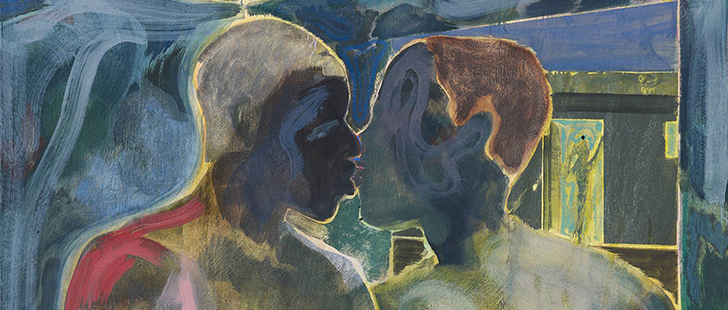 Showcasing new and recent paintings that merge the traditions of European painting with the subjects and materials of East Africa to reconsider cultural traditions and stereotypes, the Museum of Contemporary Art Australia (MCA) presents Michael Armitage: The Promised Land – the first solo show in Australia by the Kenyan-born painter.
Showcasing new and recent paintings that merge the traditions of European painting with the subjects and materials of East Africa to reconsider cultural traditions and stereotypes, the Museum of Contemporary Art Australia (MCA) presents Michael Armitage: The Promised Land – the first solo show in Australia by the Kenyan-born painter.
Born in Nairobi in 1984, Michael Armitage is gaining international recognition as one of the most exciting young artists working today. Living and working between Nairobi and London, the artist has held solo exhibitions at South London Gallery, Turner Contemporary, Margate, UK and White Cube Bermondsey, London and Hong Kong.
His works are currently on display in the major exhibition May You Live in Interesting Times at the 58th International Art Exhibition, Venice Biennale, Italy and will feature in a solo exhibition at the Museum of Modern Art, New York as part of its re-opening program later in the year.
“The MCA is thrilled to be the first Australian museum to exhibit the work of Michael Armitage,” said MCA Director, Elizabeth Ann Macgregor OBE. “His evocative paintings that merge the traditions of European painting with the subjects and materials of East Africa were a highlight of this year’s Venice Biennale.”
Michael Armitage’s large and lush paintings draw on storytelling, memory, current affairs, popular culture and the historical events of Kenya and East Africa. Curator Natasha Bullock has worked closely with the artist on his Australian debut, which brings together a selection of significant works which explore the representation of gender, sexuality and politics.
The exhibition takes its title from The Promised Land (2018), one of a series of new works that reflect on the political demonstrations which followed the outcome of the 2017 general elections in Kenya.
The artist paints with oil on Lubugo bark cloth – a culturally-significant material of the Buganda people in Uganda. The bark cloth is traditionally used as a burial shroud or in ceremonies. Replete with ripples, stitches and holes, Armitage stretches it across a frame to form the textured surface of his large-scale paintings.
Influenced by the traditions of western art history and the paintings of artists such as Francisco de Goya, Paul Gauguin, Édouard Manet and Titian, his work illustrates the full spectrum of human emotions. Armitage’s paintings reconsider cultural traditions and stereotypes, spinning the exoticising gaze of Western art history into a different direction.
“Armitage’s paintings exist in a capacious space; they are at once inward-looking of his cultural heritage in Kenya and outward-looking, inclusive of the western art traditions that he has observed over the years in London and abroad,” commented Curator Natasha Bullock.
Living and working between Nairobi and London, Michael Armitage is one of Kenya’s most exciting young artists. He received his BA in Fine Art from the Slade School of Fine Art, University College London (2007) and has a Postgraduate Diploma from the Royal Academy Schools, Royal Academy of Arts, London (2010).
Forthcoming and recent projects include Michael Armitage, Museum of Modern Art, New York (October 2019); May You Live in Interesting Times, 58th International Art Exhibition, La Biennale di Venezia, Italy (2019); The Promised Land, Fondazione Sandretto Re Rebaudengo, Italy (2019); Memory Palace, White Cube Bermondsey and White Cube Mason’s Yard, London (2018); The Chapel, South London Gallery, London (2017); Peace Coma, Turner Contemporary, Margate, UK (2017); Now, Scottish National Gallery of Modern Art, Edinburgh, UK (2017) and The Lotus in Spite of the Swamp, Prospect.4, New Orleans, USA (2017).
Michael Armitage: The Promised Land
Museum of Contemporary Art Australia, 140 George Street, Circular Quay (Sydney)
Exhibition continues to Sunday 22 September 2019
Free entry
For more information, visit: www.mca.com.au for details.
Image: Michael Armitage, Kampala Suburb, 2014 (detail), oil on Lubugo bark cloth, Private Collection, London – image courtesy and © the artist
